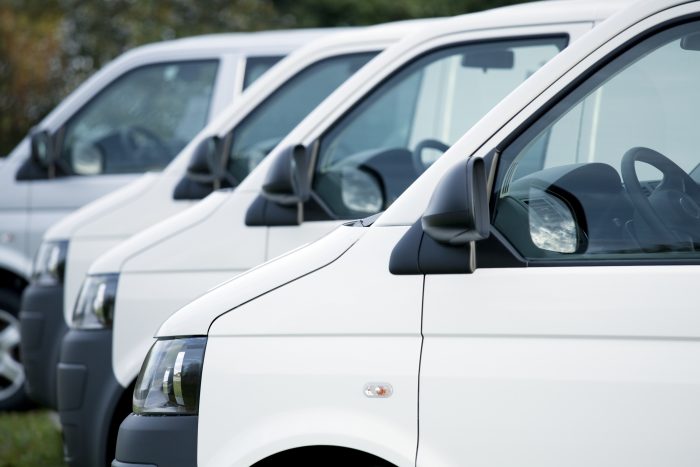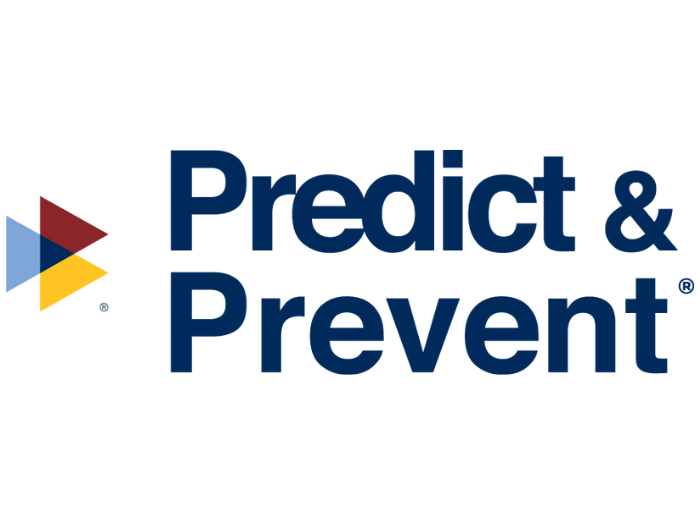Automotive Risks
Auto Fleet Risks: 5 Things Risk Managers Need to Know

In the U.S., auto fleet risks are a daily challenge. Roughly 121 million business vehicles share the road with some 128 million passenger vehicles.
With this volume, opportunities for risky events, such as speeding and distracted driving, can keep fleet managers up at night.
1) Distracted Driving
Distracted driving is a key risk factor in the growing number of accidents on the road today. A National Highway Traffic Safety Administration (NHTSA) study found that, in 2016 alone, 3,450 people were killed in crashes involving distracted drivers.
The NHTSA describes distracted driving as “any activity that diverts attention from driving, including talking or texting on your phone, eating and drinking, talking to people in your vehicle, fiddling with the stereo, entertainment or navigation system — anything that takes your attention away from the task of safe driving.”
Peter R. VanDyne, technical director, Risk Control Services, Liberty Mutual Insurance, said distracted driving risks are greater for fleets of lighter vehicles as compared to heavier vehicles. These drivers have been identified as more often engaging in dangerous driving behaviors that result in risk events. (With heavier fleets, it’s the shortage of drivers that increases risk.)
The push to curtail risky human behavior has resulted in some meaty laws. For example, driving while texting is banned in 46 states and the District of Columbia and driving while holding a cell phone is illegal in 14 states, giving risk managers some muscle to back up phone-free driving requirements.
“Training … needs to be communicated as the company’s expectation, ‘We expect you to wear your seat belt every time you operate a company vehicle for any distance.’ ” — Peter R. VanDyne, technical director, Risk Control Services, Liberty Mutual Insurance
But laws, and even training, are not what really change behavior, VanDyne said.
“Most of the training we’ve seen to date has a marginal impact on driving,” he said. “The training content tends to be on what is safe and what is the law. But to really work, the training needs to focus on the things that are ‘company expectations.’
“Training shouldn’t be communicated as a message, like ‘seat belts save lives.’ Rather, it needs to be communicated as the company’s expectation, ‘We expect you to wear your seat belt every time you operate a company vehicle for any distance,’ ” VanDyne said.
2) Aggressive Driving
The NHTSA defines aggressive driving as the behavior of an individual who “commits a combination of moving traffic offenses so as to endanger other persons or property.” Hard-breaking, speeding and acceleration are examples of aggressive driving.
In 2016, the NHTSA reported that “speeding killed 10,111 people, accounting for more than a quarter (27 percent) of all traffic fatalities that year.” Not only can speeding lead to more crashes, it can also make the severity of crashes greater.
For auto fleet managers, addressing aggressive driving needs to include more than simply stating the law and the company’s expectations, VanDyne said.
Hard-breaking, speeding and acceleration are examples of aggressive driving.
“Sometimes management needs to assess what the root causes of aggressive driving are,” he said.
VanDyne used as an example the case of an employee who had multiple speeding incidents but was otherwise exemplary. “If management dug deeper, they would learn that this employee’s son’s daycare opened at 8:30 a.m., and he was due into work at 9 a.m. But the 30-minute commute to the office, often hindered by traffic, led to his ‘beat the clock’ driving tendencies. The employee wasn’t alone in this dilemma. After learning this, management could launch a flexible start-time policy and subsequently reduce risk significantly.”
3) Impaired Driving
Drunk driving, drug-impaired driving and even drowsiness are risks that costs profits and lives. The NHSTA reported that drunk driving accidents claim 10,000 lives annually — that’s 28 people a day — and these deaths and damages contributed to a cost of $44 billion every year.
“Businesses face a variety of fleet risk challenges, including impaired driving, that negatively affect drivers’ abilities while on the road and push up the frequency of auto accidents,” said Mark Lucca, senior director, commercial auto product management, Liberty Mutual Insurance.
Drunk driving is decreasing thanks to advocacy and education coupled with increased penalties and fines. But drugged drivers, those using marijuana and illegal substances, continue to be a leading cause of accidents and auto fleet risks.
4) Increased Litigation and Claims Severity
Commercial auto litigation and claims severity are both trending upward. Lucca cited a recent report estimating claims severity increased by 17.4 percent between 2010 and 2017.
In large part these adverse trends are a result of the increased costs of both medical care and vehicle repair (See Risk No. 5, below) and further exasperated by increased claims litigation.
“The litigation environment is more complex,” said Lucca. “Damages are increasing. The trial lawyers have become more aggressive and focused on specific industries, and it’s adding to the severity of claims. Awards are larger than in the past and more cases [are] going to trial. Unfortunately, there is no indication that this trend is going to level off anytime soon.”
Additionally, Lucca said the report also noted 24/7 news and social media coverage of serious truck crashes has led to plaintiffs’ lawyers pursuing higher damages.
An example of a high-profile accident is the Walmart truck that hit a limo carrying comedians James McNair, also known as Jimmy Mack, who was killed, and Tracy Morgan, of 3rd Rock from the Sun and Saturday Night Live fame, who was injured. McNair’s two children eventually settled with Walmart for $10 million. Morgan’s settlement amount was not confirmed, but Walmart’s insurance carrier reportedly reimbursed the mega-store millions for the loss after some contention over the very high settlement amount, rumored to be about $90 million.
5) Rising Costs
Both medical costs and auto repair costs have been rising considerably, according to Liberty Mutual’s Lucca.
“In the past 10 years, insurance claim costs for bodily injuries increased 42 percent, primarily due to the increase in medical care costs to treat injuries.  The same holds true for auto repair costs; newer vehicles with newer and advanced technology will cause costs for commercial fleets to continue to increase.”
The same holds true for auto repair costs; newer vehicles with newer and advanced technology will cause costs for commercial fleets to continue to increase.”
Commercial vehicle repair and replacement are auto fleet risk costs that have soared, rising 17 percent over the last 10 years.
Newer vehicles with technology-driven features run higher tabs when replacement or repair is needed. Features such as built-in navigation systems, camera- and sensor-based systems, power doors and lift-gates and other features that can make a vehicle safer on the road, make it costlier when it’s in the shop.
Safety Up; Costs Down
Both VanDyne and Lucca stressed that there are steps auto fleet risk managers can take to mitigate these risks: “The idea is, why have an accident if you can prevent it. Improve safety and reduce claims by applying practical strategies,” said VanDyne.
These steps include creating a culture of safety, engaging insurance partners and employing best practices and strategic safety initiatives that are ongoing and measurable, as well as the use of telematics. That last item just may be the golden ticket.
According to iFleet, telematics is “an exceptionally powerful tool that can monitor and report on vehicle location, vehicle mileages, engine on/off times, driver behavior (speed/braking) as well as fuel usage, vehicle performance and more. Indeed, the most sophisticated telematics systems can allow for preventative action to be taken prior to mechanical failure, saving downtime and potentially reducing repair bills.”
“Why have an accident if you can prevent it. Improve safety and reduce claims by applying practical strategies.” — Peter R. VanDyne, technical director, Risk Control Services, Liberty Mutual Insurance
However, VanDyne and Lucca advocate harnessing the existing technology and investment fleets already have in their telematics technology to further help with risk management. Doing so means looking at the data differently and working together with drivers and insurer to create best practices.
Many auto fleet risk managers become overwhelmed by the massive amounts of data, they said, and consequently, they can’t truly leverage it for risk management purposes.
For example, a fleet manager may know that there are 200 acceleration and braking events in one day. But are these events all bad? Probably not.
Rather than directing drivers to ‘watch their acceleration and braking,’ they can evaluate the data to determine the amount of which acceleration and braking events are reasonable or typical, and from there they can set an expectation for drivers. &










